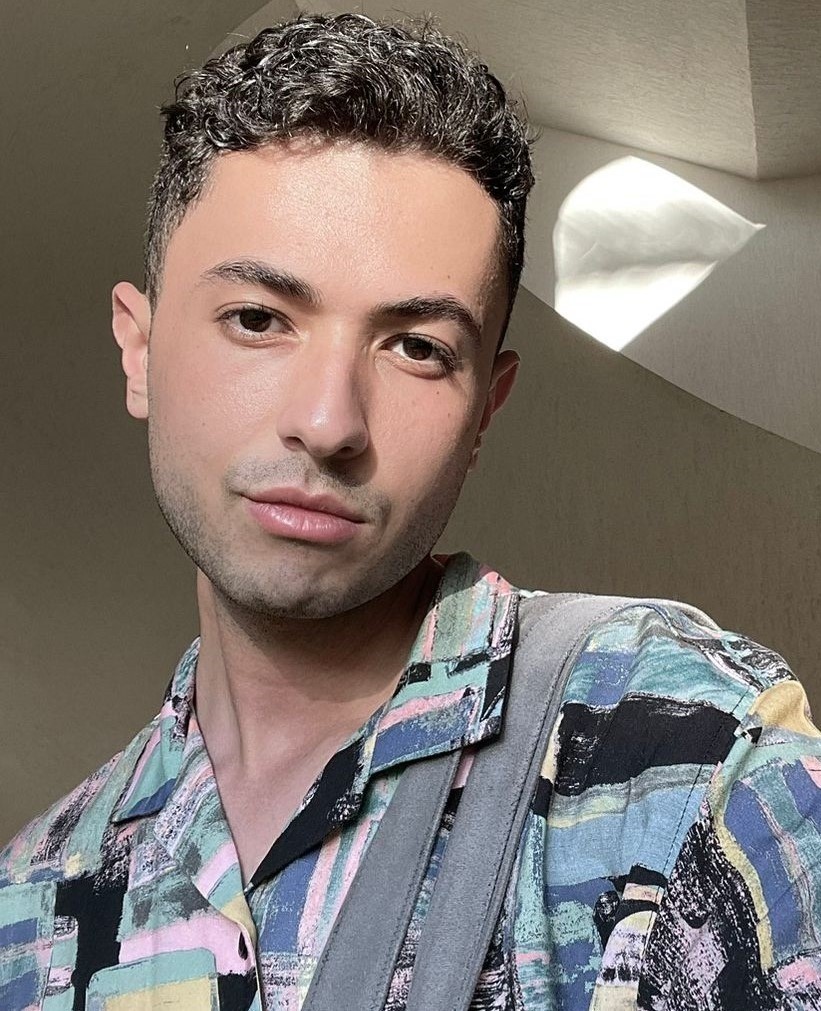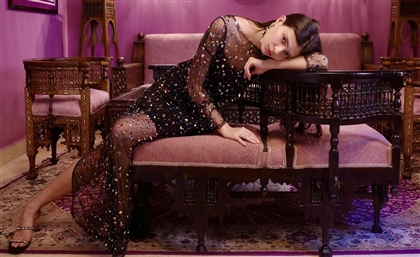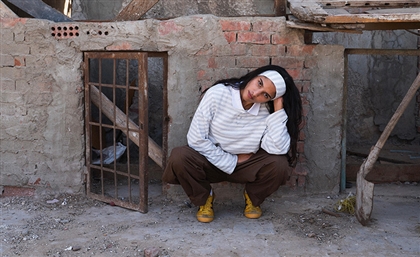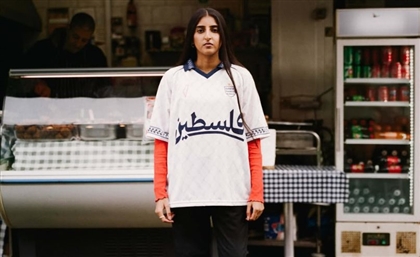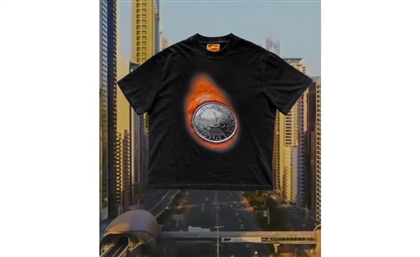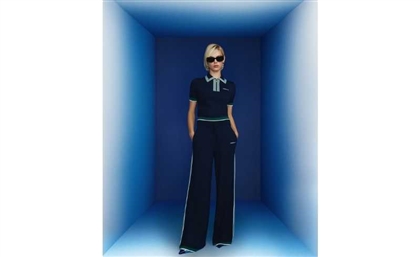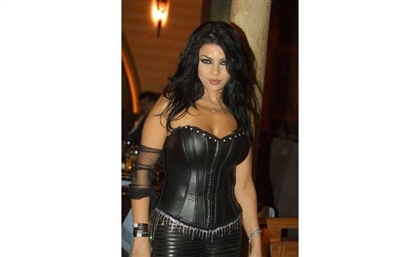Cynthia Merhej is the Lebanese Designer Giving Rise to a Renaissance
This is not the story of romanticism but how romanticism enables fashion to thrive under art’s helm.
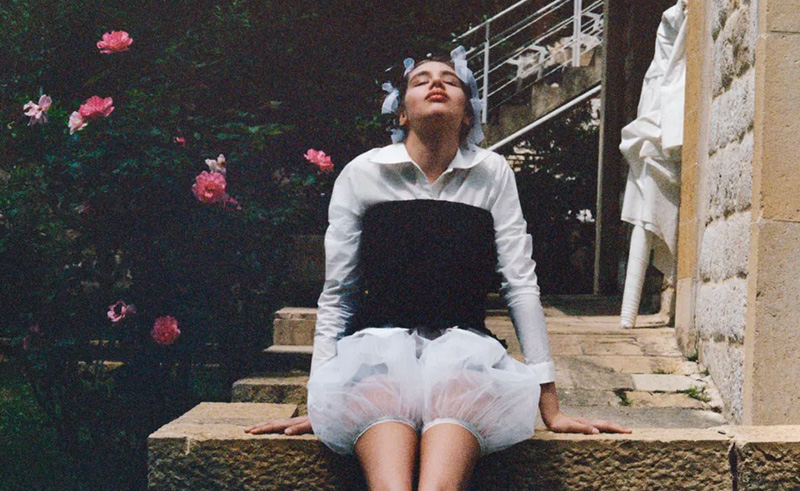
From her great grandmother Laurice Srouji’s atelier in Yafa, Palestine, to her mother’s Beirut-based atelier, Lebanese designer Cynthia Merhej has given her life to one purpose; to bridge between the past and the present, the classic and the contemporary, which is to say, for Cynthia Merhej, the mission is quite simple; to give rise to a renaissance, twice over.

Embracing dualities as alluded to in the brand’s naming, Merhej seeks to pay tribute to both the similarities and differences between generations and eras. Growing up entrenched within the realm of fabrics, Merhej knew from her earliest days where life would lead her. Studying visual communications at London’s Central Saint Martins and the Royal College of Art, Merhej returned to Beirut, rolled up her sleeves, and made sure the craft kept running in her family.

Founded in 2016, Renaissance Renaissance is a real-life embodiment of dollhouse-chic, crafting garments with one foot in eras long gone, and another in a future hitherto uncharted.

Growing up in your mother's atelier in Beirut must have been a unique experience. Can you share a specific memory or moment from your childhood that significantly influenced your decision to pursue a career in fashion and design?
One memory that really lives within me is the time when my mother would receive all her fabric swatches. It was truly exciting to go through them all and start imagining what they would end up becoming.

How did your education in London shape your approach to fashion, and in what ways did it influence the identity of Renaissance Renaissance?
For many Lebanese creatives, studying art at school was considered quite the privilege. My mother was self-taught, and so I had no idea that a school specialised in art even existed. For a kid like me, one that was obsessed with the arts from a young age - to be in an environment where every single day what I was doing was creating, being challenged to create, and doing what I loved, was a dream come true.

Being in London gave me unparalleled access to magazines, books, music and so on, that I would only dream about in Lebanon. It allowed me to really bloom in many ways and to learn very important skills in creative and critical thinking that influenced me as a creative practitioner, and of course that went into how I approach my brand until this very day.

Your Middle Eastern heritage serves as inspiration for your designs. Can you pinpoint a specific element or aspect of your heritage that consistently finds its way into your collections?
My heritage influences me very strongly in many ways, even beyond the aesthetic, I think that people in this region, especially women, have very likely had to live through very challenging circumstances, especially in Lebanon which has generally been a very uncertain environment for as long as I could remember.

And yet, even in the worst of times, they dress up, they live, and they have a sense of style that we rarely see these days anymore, and it's incredibly inspiring.

Your designs are described as a conversation between past and present, traditional couture and contemporary perspectives. How do you navigate this delicate balance in your creative process, and what challenges or joys does it bring to your work?
I think it's a very delicate process. My eyes were trained to identify what makes a ‘perfect’ garment, and then there is the side of me that obviously wants to rebel against that.

As I got older I realised that actually trying to find the harmony between both, is what makes it unique and challenging for me. I think that's a bit difficult for people to understand sometimes, because my designs tend to evoke a young spirit utilising old techniques.

Where do you find inspiration, and how do you translate that into the unique pieces seen in each Renaissance Renaissance collection?
I draw inspiration from everywhere, but it really starts with maybe a feeling and a certain intuition. Sometimes there is a narrative element to the story, sometimes not, but I do feel it does often come back to the narrative. There is always a lot of sketching and absorbing imagery, but I think it only really starts when I start making things.

I’d love to hear all about the inspiration behind your FW23 collection. Do you perhaps have any favourite pieces from the collection?
I envisioned a more classical woman for that collection, aiming for a touch of old-school elegance. My favourite aspect was sourcing a second-hand fur coat, deconstructing it, and integrating its textures into the garments, creating a unique interplay with other fabrics.
It was a challenging period in my life when I worked on that collection. Creating those pieces provided a welcome respite, allowing me to embrace playfulness and experimentation, reminding myself of the love I have for my craft. My dear friend, Zeid Hijazi, played a crucial role during that time by discovering those beautiful coats, which served as a lifeline in the midst of a particularly dark period.

Looking back since the founding of Renaissance Renaissance, are there specific moments that hold a special place in your heart?
I think every day with Renaissance Renaissance feels special and has its own accomplishments, no matter how small. Frankly, trying to develop a brand in Lebanon with all the events that have happened in the last few years is quite difficult - every day you're still standing feels like a miracle.

Your great grandmother, Laurice Srouji's atelier in Palestine, must hold a special place in your family's history. Can you share a personal anecdote or story passed down through generations that resonates with the spirit of that atelier and continues to influence your creative journey?
There are many, but one of them was how women from all over Palestine would not get married until they could ensure that Laurice would be able to make their bekjeh or trousseau. They would even base their wedding dates on that!
- Previous Article The Art School Dropout Edit
- Next Article Palestinian Designer Zeid Hijazi on Surviving as a 21st-Century Artist
Trending This Month
-
Dec 08, 2025
-
Dec 11, 2025

